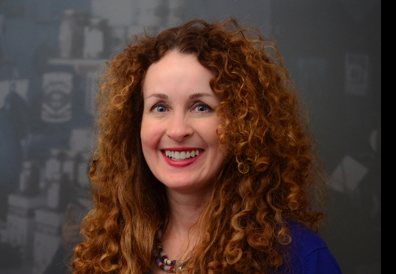
At the beginning of every AIA Virginia Board of Directors meeting, two Directors share their “Mission Moment” with their fellow Board members. It’s always interesting to hear how your colleagues are acting as citizen architects, or as mentors, or as advocates for our profession. Their stories are always different, and they inspire me.
(This is our AIA Virginia Mission: “AIA Virginia is the voice of the architecture profession in the Commonwealth, dedicated to serving its members, advancing their value, and improving the quality of the built environment.”)

2020 AIA Virginia President
I was thinking a couple of weeks ago about what my current Mission Moment would be. After working in the profession for over thirty years now, I’m having a “coming full circle” experience. In the late 80’s / early 90’s, my husband and business partner, Chuck Swartz, and I started volunteering for a local non- profit group called City Light Development Corporation. We had both done our architectural internships in an architecture firm that served extremely wealthy clients. For example, I worked on an exercise pavilion / guest house, with a hangar below it for our client’s private helicopter. We worked on walk-in closets that were almost the size of our entire apartment. I remember one project meeting, when the client’s construction estimate was more than he wanted to spend, he indignantly yelled at our boss, “What am I supposed to do, send my kids to PUBLIC schools?” After a couple of years of this, Chuck and I decided that we wanted to spend time serving economically disadvantaged, hardworking people who needed affordable houses that had dignity.
One of the first projects we did for City Light was a project called North Kent Court. It was in a neighborhood that many people in Winchester were afraid to walk or drive in. We designed nine small, single family houses for North Kent Court. They were one-and-a-half story, 24′ by 24′ square, single family houses (the size of a two-car garage). They were 935 square feet, and cost $40,000 each when built in 1992. We could have designed one house and had it repeat nine times. Instead, we designed a 24′ square module, and rotated the gable 90 degrees on each house. We gave each house a front porch, so there were “eyes on the street” and so neighbors were encouraged to interact with one another. We wanted each house to have its own identity. Each house had different elevations, depending on the orientation of the gable, the design of the porch, and the configuration of the siding. The exterior paint was donated, so the houses’ colors turned out to be slightly funky and unusual, which we loved. Many other building materials were donated, like ugly rectangular fluorescent ceiling lights (not so great), and white carpeting (not at all practical). That was okay, though. The project was published in Inform and Progressive Architecture magazines. It won design awards, including one from Fannie Mae. Ever since that project, our office has made a point of doing pro- bono work for the local non-profit groups that serve our community.
Fast forward… A local Habitat for Humanity chapter was formed, and it bought “our” old City Light houses. Habitat loves the houses, and shows them off to people. About three weeks ago, we met with leaders from the local Habitat chapter, and they told us they bought the land that completes the rest of the original North Kent Court block. This purchase provides them with five small new building lots. They told us they want the new houses to be in the spirit of the old ones, and to honor them. This is such an exciting pro- bono project for us. We can’t wait to design something that riffs off of, respects, and improves the original. And so, we’ve come full circle, after thirty years.
So, what’s your Mission Moment? Do you serve on a Planning Commission, City Council, or Board of Architectural Review? Do you mentor a young professional? Do you volunteer for Habitat or another civic organization? Do you teach or mentor architecture students? Do you work with K-12 students, introducing them to possible careers in architecture or construction? I encourage you to be engaged in your community. Be engaged in your profession. Be an advocate. Live your Mission Moment. And thank you for all that you do.
With best regards,
Beth
